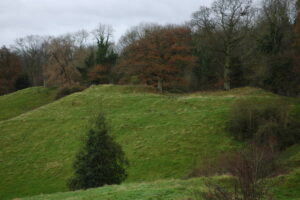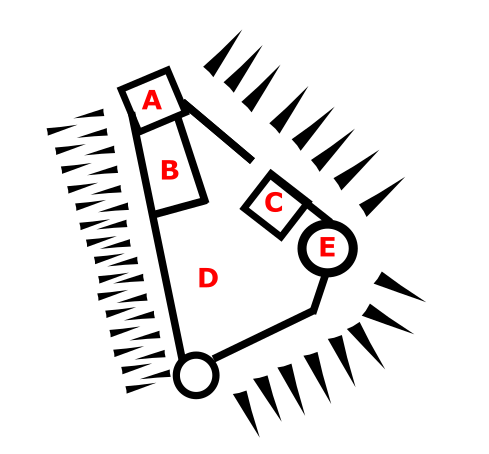
Bacton Castle was a fortification in the village of Bacton, Herefordshire, probably built in the late 12th or early 13th century.
There may have been an earlier fortification on the site of Bacton Castle, constructed after the Norman Conquest, but later a small castle was built on a spur north-east of the village, overlooking the River Dore below. It was probably constructed either by William de Bacton in the late-12th century, or Richard de Hampton in the early 13th.

The castle was triangular in design; a low motte, 2.4 m tall, faced east, supporting a circular stone keep, approximately 9.7 m in diameter, with walls up to 2.4 m thick, and a buttress on the eastern side. The bailey walls, approximately 1.8 m thick were surrounded by a bank up to 10 m in height, helped by the natural shape of the spur, and a ditch up to 3 m deep cut out on the western side. The bailey contained a hall, probably 9.7 by 17 m across, a gatehouse or forebuilding, and ancillary buildings, and possibly one or two small towers along the walls. There may have been further buildings – a bailey or a small settlement – further to the west of the site.
The castle had fallen out of use by the 14th century. In the 21st century, the site is protected under UK law as a Scheduled Monument.
Attribution
This article uses images from the Geograph website, including Bacton Castle, by Philip Pankhurst, released under CC BY-SA 2.0.
